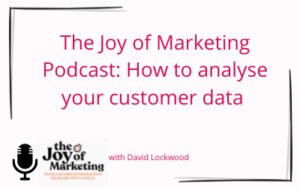When it comes to multi-channel, the whole may be greater than the sum of its parts, but sales success requires understanding the role each route to market plays in delivering this. Just as your customers are not all created equal, neither are your marketing channels. Effective decisions and, thus, effective marketing, require you to understand the value of each touchpoint in the purchase path. This is the nub of incrementality testing.
With so much data available and so many metrics to choose, you’d think measuring multi-channel activity would be simple. But it’s not. Many digital performance metrics, like click-through rate, offer little insight and fail to inform on business impact. Yes, first touch and last touch attribution models are easy to explain and implement, but they distort channel value. This which is why incrementality testing is vital, as it helps you understand the importance of your channels in driving a sale.
Understanding Incrementality testing
So, what is incrementality testing? Well for ‘incrementality’ think ‘lift’. It measures the lift that a channel brings to your campaign results, over and above what you would have achieved from natural demand. Some people will continue to buy from you, even if you severely reduce your marketing. What incrementality testing highlights are the increased sales you achieved that would not have occurred without marketing via that channel. Basically, it’s the increase in sales that’s attributable to your marketing efforts.
So why is this so important. Well, it’s simple. Better insights mean better decisions mean better marketing and more sales.
We find that companies take a ‘waterfall’ approach when it comes to deciding on their most effective channels. They rank them from best to worst based on gut feel, with those perceived as the most measurable at the top of their hierarchy. The result? You will always credit those ranked highest as your most effective sales drivers, irrespective of whether this is true or not. This approach distorts the real impact of a channel, leading to a misaligned strategy that delivers less successful campaigns.
Building a matrix approach
While marketing is an art and science, channel attribution is complicated and requires a scientific approach to making it work, so you may need support. You need to start with a channel-neutral assessment of the customer journey and build a realistic view of channel engagement. For example, we develop bespoke matrix and attribution reporting for multi-channel retail and ecommerce businesses, using this to build incrementality testing. The matrix approach removes the hierarchical attribution model often used, providing a complete view of channel potential, helping you develop a valid multi-channel strategy. You can refine this over time, using attribution reports to optimise your strategy.
In work we have done with e-commerce retailers, we find that the catalogue – often central to their marketing – is not the driver of sales that they thought. Usually, digital channels are having the most impact, with email also strong, although not given the credit it deserves.
Making a difference
Adopting incrementality testing and defining an effective attribution strategy gives you the confidence you need in making critical marketing decisions. You can test and understand a new channel’s potential before allocating too much budget to it. You can allocate marketing spend to the best performing channels, delivering budgeting efficiencies, more sales and improving your campaign ROI.
For a true multi-channel approach, you must ensure all your channels work together optimally and complement each other. You need to judge channel effectiveness on how each contributes to your business KPIs. Marketing success is defined by the channels you choose to focus on, and those you don’t. Prioritising marketing spend on one channel over another is difficult and has consequences, so you must get it right. If you are serious about building an effective multi-channel strategy, you must carry out incrementality testing to inform your planning and decision making.




